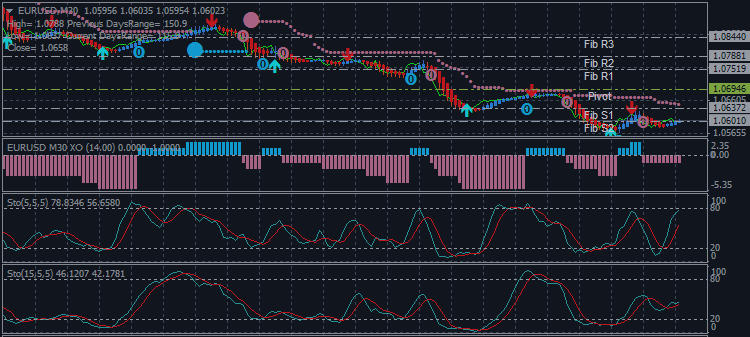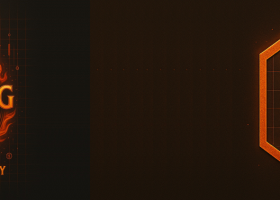Developed by George C. Lane in the late 1950s, the Stochastic
Oscillator is a momentum indicator that shows the location of the
current close relative to the high/low range over a certain number of
periods.
New traders typically want to know the difference between Fast Stochastics and Slow Stochastics. They also want to know whether the typical default settings of 5,5 (Fast Stochastics) or 5,5,5 (Slow Stochastics) as seen in most charting packages developed for FX are better or worse than the typical default settings of 14,3 (Fast Stochastics) or 14,3,3 (Slow Stochastics) seen in stock and futures charting packages.
When calculating Fast Stochastics using the values of 5 and 5, the first “5” is the raw value for Stochastics, while the second “5” is a 5-period moving average of the first “5”. When using Slow Stochastics, the first two 5’s are the same as with the Fast Stochastics, with the third “5” being a moving average of the second “5”. Yes, that’s right, a moving average of the moving average. This slows the movement of the indicator down even further, hence the name of Slow Stochastics.
New traders typically want to know the difference between Fast Stochastics and Slow Stochastics. They also want to know whether the typical default settings of 5,5 (Fast Stochastics) or 5,5,5 (Slow Stochastics) as seen in most charting packages developed for FX are better or worse than the typical default settings of 14,3 (Fast Stochastics) or 14,3,3 (Slow Stochastics) seen in stock and futures charting packages.
When calculating Fast Stochastics using the values of 5 and 5, the first “5” is the raw value for Stochastics, while the second “5” is a 5-period moving average of the first “5”. When using Slow Stochastics, the first two 5’s are the same as with the Fast Stochastics, with the third “5” being a moving average of the second “5”. Yes, that’s right, a moving average of the moving average. This slows the movement of the indicator down even further, hence the name of Slow Stochastics.
By slowing the movement of the indicator down, we will see fewer signals
to buy or sell on the chart, but they should be more reliable signals.
By using a larger value in calculating the raw value of Stochastics, we
slow the indicator down even more. This is why I recommend to traders
using FX charts to use the Slow Stochastics with values of 15,5,5. This
combination offers fairly reliable signals that can offer solid entries
into trading opportunities. The chart below shows the difference between
Fast Stochastics with values of 5,5 compared to Slow Stochastics with
values of 15,5,5.




